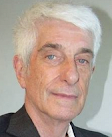Nick Cook writes: Science has a long history of compartmentalisation. The chief architect of the revolution that has marked our science paradigm of the last 250 years was the 17th Century French natural philosopher René Descartes, who pronounced that mind and matter were separate. ‘Cartesian dualism’ has coloured our perception of the world ever since and maintained other divisions besides. Thanks to dualism, science has been left to explore the universe with objective detachment, leaving the business of spirit to religion. In this paradigm, it was tacitly agreed that each would stay out of the other’s way.
The cosmos as mapped by the classical mechanics of Descartes’ contemporary, the English natural philosopher (as he also referred to himself) Sir Isaac Newton, was – and still is – a cold, detached place that operates much as a giant clock. Until the emergence of quantum mechanics at the beginning of the 20th Century, we, the observer, had no capacity to affect it. Even now, officially, that capacity is limited to the micro-world of particles and atoms. Consciousness, if it had any role at all in this universe, was deemed to have somehow arisen from the matter made up of these atoms and particles, even though matter itself could be seen to occupy a fraction of its endless expanse.
The cold hand of Cartesian dualism still predominates – especially in the laboratory, where its unwritten rules state that objective data are the only data that count and only then if the experiments that derive them are repeatable. If Ingo’s hypothesis is true, however, it would make the alternative landscape emerging out of my science exploration of Phase 2, where next to nothing is straightforward – and science is far more squirrelly, actually, than a lot of scientists would want us to believe – much more understandable. Because in Ingo’s ‘non-immediate realm’, the precise opposite of the Cartesian world held true – everything was a little bit (or, at times, a lot) weird; and next to nothing was repeatable; the paranormal operates on what seems to be its own terms, but its impacts in our 3D/4D space can unquestionably be physical.
If we extend its range to a wider set of phenomena beyond those associated (rightly or wrongly) with the dead - to ESP, the study of unidentified flying objects (UFOs), the study of cryptozoology (mythological creatures such as werewolves, bigfoot, the yeti, etc that are said to roam parts of the planet as ‘cryptids’) and discarnate entities characterised as angels and demons – then these phenomena, too, can be said to ‘leak’ into our realm, just as the information pertaining to the Titanic tragedy did.
Except, per Ingo’s hypothesis, the interconnection between the two worlds meant we had to stop looking on them as two but as one – no more ‘normal’ and ‘paranormal’. In this model of the universe, we needed to consider an aspect of it in which the reality we customarily experience gets ‘bent out of shape’ in the presence of certain kinds of anomalous phenomena. In this small, but quirky corner of the ‘reality envelope’ – populated as it had become by my Phase 2 research data – reality is both ‘real’ and ‘unreal’ (ghosts that come and go), distorted by odd time effects (the missing time reported by UFO abductees), populated by ‘miracle cures’ (examples of spontaneous healing) and benign and malign ‘intelligences’ (good and bad spirits).
As I grappled to come to terms with the features of this bizarre and slippery corner of existence, I wrestled, too, with what to call it. One term I had encountered in my literature trawl was a ‘metaphorical reality’, another was a ‘non-literal reality’. But neither of these seemed to do total justice to what the data indicated were three sets of conditions that appeared both to underpin the phenomena and to influence them: location, environment and culture.
 |
| Eric W. Davis |
 |
| Jacques Vallée |
Layer 1: Physical: the encounter (usually, but not always with a UFO) exhibits physical effects and leaves physical traces in the environment.
Layer 3: Psychological: The tendency of witnesses to rationalise an unreal encounter in rational terms – until faced with the inescapable conclusion that the object/phenomenon is unknown.
Layer 4: Physiological: The phenomenon is reported to cause effects perceived or felt by humans as: sounds (e.g. buzzing, rushing), burns, paralysis, extreme heat or cold, metallic taste, loss of volition, severe headache etc.
Layer 5: Psychic: Involves a class of phenomena with the encounter e.g. impressions of communication without a direct sensory channel, poltergeist type, levitation, premonitions, healing etc.
Layer 6: Cultural: Concerns the way society reacts to such encounters, including secondary effects, such as hoaxes, absorption into books/films, scientific theories, leading to a gradual consciousness shift in the way humans perceive ‘fantastical events’.
While this model charted the in/out, on/off, real/non-real weirdness (which is all it had ever intended to do) of what I now referred to as a ‘conditional reality set’, it hadn’t accounted for why it existed. Still needed was a model providing a cogent explanation for the interconnected, ‘as-one’ worldview Ingo had called for – one that would stop the paranormal from being treated as something separate from science.
27 Incommensurability, Orthodoxy and the Physics of High Strangeness: A 6-layer Model for Anomalous Phenomena by Jacques F. Vallée and Eric W. Davis.
Nick Cook is an author of 20 fiction and non-fiction book titles
in the US and the UK. A former technology journalist, he is well-known for his
ground-breaking, best-selling non-fiction book, The Hunt for Zero Point.
He has also written, produced, and presented two feature-length documentaries
for the History and Discovery channels. In
2021, Cook was amongst 29 prize winners in the BICS institute’s essay
competition on consciousness. His essay is available at https://bigelowinstitute.org/contest_winners3.php.




No comments:
Post a Comment